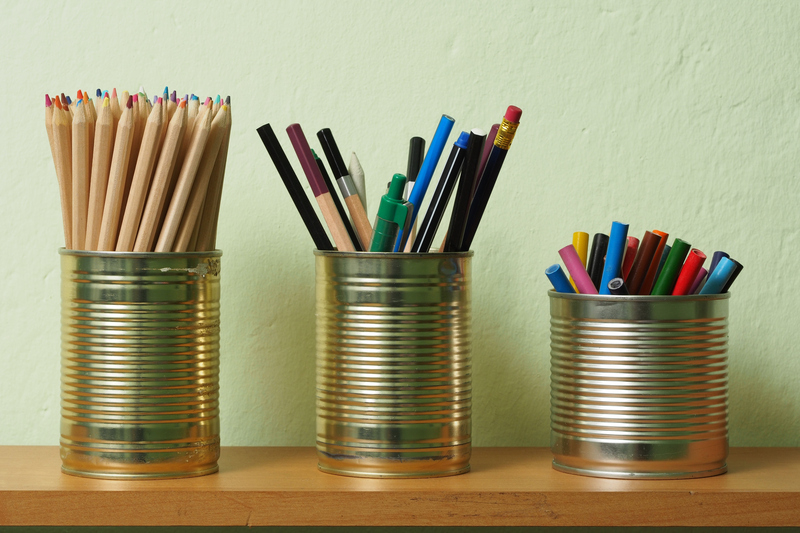Preparing Large Furniture for Safe and Easy Disposal: A Comprehensive Guide
Disposing of large furniture can be a daunting task for homeowners, renters, and businesses alike. Oversized couches, beds, desks, wardrobes, and other hefty items require more than just muscle--they need proper planning, the right techniques, and, often, an understanding of local disposal regulations. Whether you're preparing large furniture for disposal due to a move, renovation, or simple decluttering, doing it safely and efficiently is crucial for your well-being and the environment.

Why Proper Preparation Matters
Ignoring the right steps when discarding large items can cause injuries, property damage, and even legal issues. Moreover, proper preparation ensures your furniture can be recycled, reused, or discarded in an eco-friendly way, reducing landfill impact and supporting circular economies.
- Safety: Safeguards you against muscle strain, cuts, and other physical injuries.
- Convenience: Makes the removal process swift and less strenuous.
- Legal Compliance: Helps avoid fines by complying with local disposal regulations.
- Environmental Impact: Encourages recycling or repurposing, reducing landfill waste.
Step-by-Step Process for Preparing Large Furniture for Easy Disposal
1. Assess Your Furniture
Before doing anything else, evaluate the size, weight, and material of each item. Determine if the piece can be:
- Donated or sold if still in usable condition
- Disassembled for easier removal
- Recycled (especially if made of metal, wood, or significant plastic)
*Making this assessment helps you plan the best disposal method.*
2. Check Local Disposal Laws and Services
Different municipalities have unique rules regarding bulky item removal. Before disposing of large furniture, check with your local waste management authority or municipal website. Look for:
- Permitted disposal days and pickup guidelines
- Specific fees for certain items like mattresses or sofas
- Requirements for breaking down furniture into smaller, manageable pieces
- Recycling programs for large household items
Tip: Some towns offer free or discounted bulk furniture pickup during certain times of the year.
3. Gather the Necessary Tools and Supplies
To prepare your large furniture for removal, make sure you have the following tools and safety equipment on hand:
- Work gloves
- Protective eyewear
- Screwdrivers, wrenches, or power drills
- Moving straps or dollies
- Tarp or blankets to protect floors and walls
- Box cutter (for upholstery or breaking down cardboard components)
Set up a clean, open work area where you can lay out all components safely.
4. Disassemble When Possible
Disassembling furniture into smaller parts drastically eases the removal process. Many large items--like beds, dining tables, or wardrobes--come with detachable legs, arms, or frames. Here's how to do it:
- Document the Process: Take photos as you remove screws or parts, so you know where each piece belongs. This is especially useful if you're planning to donate or reassemble elsewhere.
- Remove and Organize Hardware: Place all screws, nuts, and bolts in clearly labeled bags to avoid misplacing them. Tip: Tape hardware bags to larger parts of the furniture.
- Take Off Removable Cushions and Covers: Detach and bag cushions, slipcovers, or decorative elements separately.
Disassembling also helps reduce potential damage to your property and makes it less likely you'll injure yourself or others.
5. Protect Your Surroundings
When moving large furniture items for disposal, scratches on floors, walls, and door frames can happen easily. To prevent them:
- Lay down blankets or cardboard along traffic paths
- Use corner guards or foam protectors on sharp edges
- Prop open doors in advance to simplify maneuvering
These preventive steps save on costly repairs or cleaning later.
6. Practice Safe Lifting and Carrying Techniques
To avoid back injuries or dropped furniture, follow these safety essentials:
- Lift with your legs, not your back
- Work in teams for heavy or awkward pieces
- Keep the item close to your body and center of gravity
- Use moving straps for added support and leverage
- Go slow around corners and down steps
Remember: It's better to call professional movers for extremely heavy or valuable items.
7. Decide on the Best Disposal Option
There are several routes for the safe and easy disposal of large furniture. Consider these environmentally friendly and practical alternatives:
- Donation: If the item is in good condition, nonprofits, shelters, or thrift stores may accept it. Some organizations offer free pickup services.
- Selling: Online marketplaces, garage sales, and social media groups provide platforms for reselling usable furniture. Breaking down the item prior to shipping may save on costs.
- Recycling: Many communities host "furniture recycling" or "bulk item recycling" events, especially for wood, metal, or mattress components.
- Upcycling: Transform old furniture into something new--like benches from bed frames or storage from wardrobes. DIY projects can be fulfilling and keep items out of landfills.
- Curbside Pickup: Schedule a pickup with your municipal waste service or a professional junk removal company. Follow local guidelines for placement and disassembly.
Note: Leaving bulky items illegally on curbsides can result in fines or neighborhood complaints.
Additional Tips for Streamlined Large Furniture Disposal
1. Plan for Pickups or Rentals
If you don't have access to a large vehicle, consider renting a truck or contacting a junk removal specialist. They have the expertise and equipment for safe, efficient removal. Some services even offer eco-friendly sorting and recycling.
2. Prepare for Apartment or Shared Building Rules
Residents in apartment complexes or buildings with shared facilities should notify property management before moving large furniture out for disposal. Reserve elevators, loading docks, or parking spots as needed.
3. Remove Hazardous Components
Certain furniture--like old recliners, electronics-laden entertainment centers, or items stuffed with foam--can contain hazardous parts (e.g., batteries, chemicals). Check local e-waste or hazardous waste programs for correct removal methods.
4. Label Items Correctly
Clearly labeling items for disposal ("TRASH," "DONATE," etc.) helps avoid confusion for removal crews, neighbors, or potential scavengers.
5. Be Considerate of the Environment
Whenever possible, prioritize recycling or donation over landfill disposal. Investigate local programs for:
- Wood cutting and composting
- Textile recycling (for upholstered furniture)
- Metal scrap yards
- Second-hand construction or restoration shops
Sustainable disposal benefits both the planet and your community.
Common Mistakes to Avoid When Disposing of Chunky Furniture
- Ignoring Local Laws: Always confirm guidelines before leaving furniture outside.
- Skipping Disassembly: Whole pieces are harder to move and may be refused by collection services.
- Not Protecting Property: Failing to prepare traffic paths leads to unwanted damages.
- Unsafe Lifting: Improper technique can result in strains or dropped items.
- Missing Donation or Recycling Opportunities: Many items can support those in need or be reused; landfill should be a last resort.

FAQs on Preparing and Disposing of Large Furniture
Q: Can I just throw my sofa or mattress on the curb?
No. Most cities have strict regulations about curbside disposal. Large items often require scheduled pickups or drop-offs at designated facilities. Always verify with your municipality first.
Q: How do I find out if my furniture can be donated?
Research local charities, shelters, or thrift stores. Most post their donation requirements online, including acceptable item types and condition standards. Some even offer free collection.
Q: What if my furniture is too damaged for donation?
Contact a recycling center or professional junk removal service. They can assess if the materials can be recycled--even when the furniture itself isn't usable.
Q: How do I minimize environmental impact when disposing of old furniture?
Prioritize repair, donation, or recycling over landfill disposal. Separate materials (wood, metal, fabric) for specialized recycling streams. Explore creative upcycling projects within your community.
Q: How much does it cost to dispose of bulky items?
Fees range widely depending on your location, type of item, and hauling method. Municipal pickups may be free for a limited number of items, while junk removal companies charge based on volume or item count. Always get a quote beforehand.
Conclusion: Make Large Furniture Disposal Safe, Simple, and Sustainable
Preparing large furniture for disposal isn't just about hauling it to the curb--it's about safeguarding your health, your property, and the environment. By assessing your items, following local guidelines, and using proper tools and techniques, you can dispose of big furniture safely and easily. Always consider donation, resale, or recycling before opting for landfill disposal, and remember: a little preparation goes a long way in making a challenging task smooth and successful.
Whether you're clearing out a single sofa or an entire office suite, use this guide to ensure your large furniture disposal process is as safe, efficient, and eco-friendly as possible.